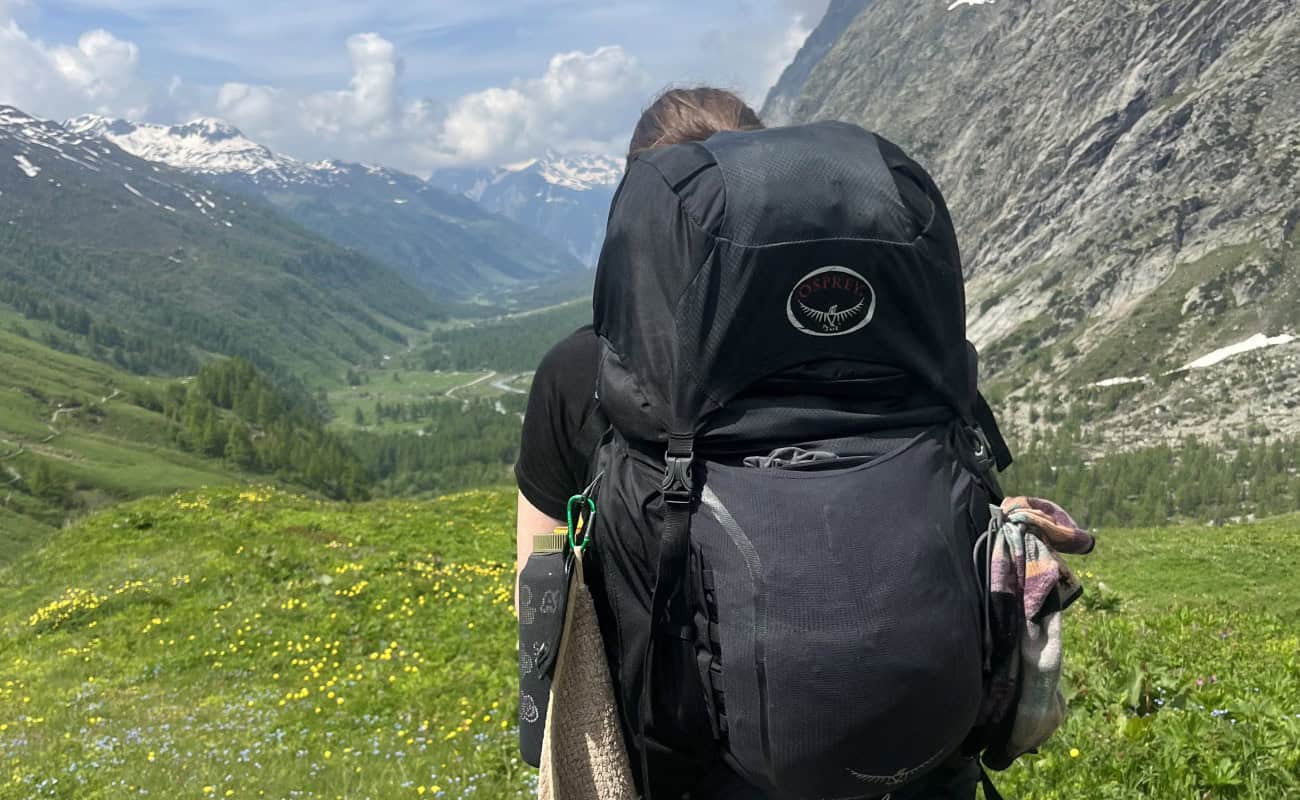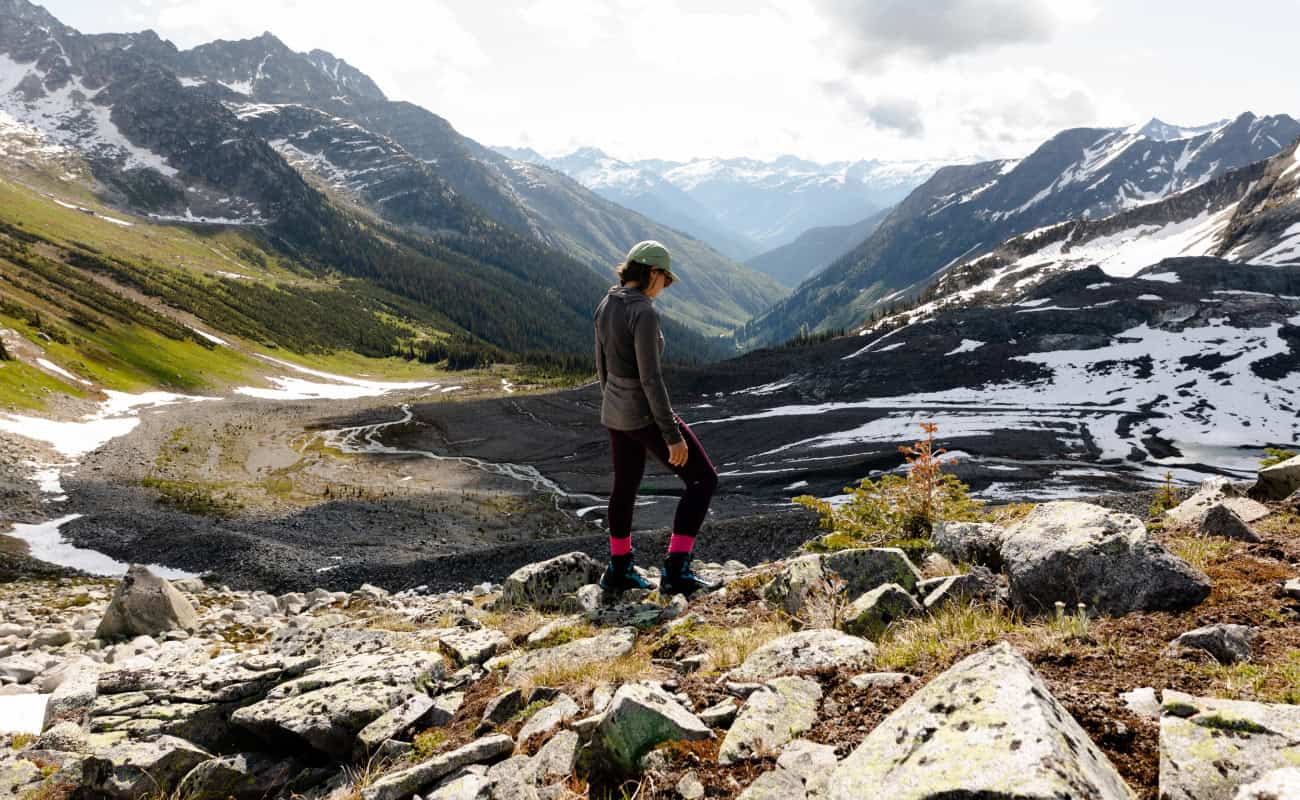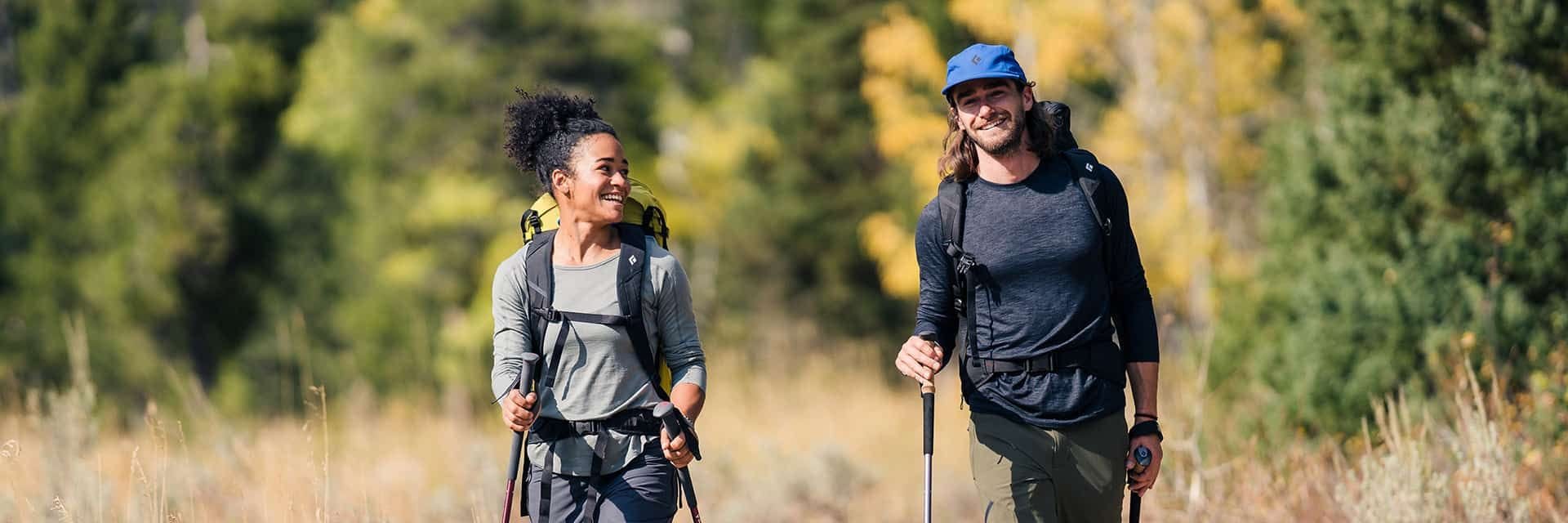Hiking is a great activity to boost mental and physical health, and it’s a great bonding experience with your kids. You may face challenges along the way and have to adapt without the usual distractions from home. Luckily, we’ve got you covered with fun hiking activities for children, safety tips for hiking with kids, and all the hiking essentials for families. Check out our 8 tips for hiking with children.
Here’s an overview. Read on for a detailed breakdown:
Choose the Right Trails for Kids
When hiking with kids, it’s best to choose trails adapted to their abilities and interests. Spots with a cool waterfall, a running stream, or some old ruins can provide a fun objective, as can looking for local wildlife. If there’s a snack or a lunch involved, it will give them something to look forward to, so finding a trail with picnic tables along the route can be great for enjoying the views. Apps like AllTrails are great for finding local, kid-friendly hiking trails.
And remember, with your kids it’s not about summiting, it’s about exploring nature and accepting that it might take half an hour to get out of the parking lot.
Bring Your Essential Gear When Hiking with Kids
When packing, you’ll want to ensure you have these hiking essentials for the whole family. Start with good hiking boots or shoes to offer much-needed traction and support. Your clothes will depend on the season/weather, so plan some additional layers if the weather is cool and sun protection on those sunny hikes.
Bring maps or a compass to teach them to navigate and be more independent. A First Aid Kit is a must for those unavoidable scrapes and bruises. If you’re hiking with toddlers, Osprey, Deuter, and Thule design some of the best baby carriers for hiking, featuring a range of adjustable, lightweight options with plenty of storage space and a comfortable spot for your little explorers.
The North Face Fastpack Waterproof Boots are a must-have for young explorers. These ankle-high hiking boots are comfortable and durable, with a DryVent Waterproof membrane that provides added protection on wet hikes. The cushioned insole offers plenty of support, and the rubber outsole provides a much-needed grip.
Price: 0.00$
Brand Name | Product Type
Pack Smart: Must-Have Items
Keeping them hydrated and energized is essential. Pack some water and tasty snacks if you want to keep them in a good mood. Even if you don’t use it, having a rain jacket always comes in handy. Consider leaving a tube of sunscreen and a can of bug spray in your designated hiking pack.
Bonus family hiking tip: Pack some accessories like binoculars or a magnifying glass. It’ll be fun for them to engage with their surroundings.
Check out the classic, kids-sized Yeti Rambler available in a range of fun colours. The straw cap makes it easy for them to drink on the go, and the Double-Wall Vacuum Insulation keeps their drinks ice cold on hot days.
Price: 0.00$
Brand Name | Product Type
Brand Name | Product Type
Check out the classic, kids-sized Yeti Rambler available in a range of fun colours. The straw cap makes it easy for them to drink on the go, and the Double-Wall Vacuum Insulation keeps their drinks ice cold on hot days.
Price: 0.00$
Keep Kids Engaged and Motivated on the Trail
In addition to the physical benefits, hiking is a great way to introduce your kids to the natural world. Most kids learn through play, so coming up with some fun hiking activities for children, like a scavenger hunt or “I Spy,” will get them excited about hiking. It’s also a great place to let them explore their surroundings and discover new plants and animals (under your watchful guidance). Getting them a cool backpack will give them a sense of independence, and it will be helpful if they want to bring some souvenirs home.
Teach Your Kids Some Hiking Safety Tips
Kids can get easily distracted. Take some time before the hike starts to teach them the basics, like staying on the trail and recognizing trail markers. In their cool backpack, throw in a list of emergency contacts and a whistle. Practice certain scenarios, such as what they should do if they get lost. Teach them about the hug-a-tree method: if they get separated, hugging a tree will help calm them down and make it easier to find them. Take the time to teach them about the local flora and fauna, how to identify the plants around them, and which ones to avoid.
How to Handle Common Challenges on the Trail
The hike should go smoothly if you’re well prepared, but you can’t predict everything. A bit of rain shouldn’t be an issue, but if you’re suddenly stuck in a downpour, seek shelter. If the sun is out and it starts to get hot, layer down, put on some sunglasses, and a cool sun hat. If you have a first aid kit, you should know how to do the basics, like cleaning cuts and bandaging them.
However, the weather is not the only thing that can turn in a moment. Knowing how to hike with kids involves dealing with whatever they throw at you. Boredom, tantrums, hunger—they can experience the full range of emotions. Try your best to deal with things calmly, know when to take a break, and prepare some fun hiking activities for children ahead of time.
Best Baby Carriers for Hiking with Young Children
Hiking with toddlers requires a different set of gear. If they’re taking their first steps, they’re not going to get very far, and that’s where a baby carrier comes in handy. The best baby carriers for hiking should combine comfort, storage, and adjustability. The Osprey Poco Plus has all three and more. If you’re planning a longer hike, the Deuter Kid Comfort Pro is designed with plenty of ergonomic support for parents and babies. If you’re looking for a baby carrier that adapts to multiple wearers, the Thule Sapling is easily adjustable and has plenty of storage for all the essentials. Check out our guide for more tips on how to choose the best baby carriers for hiking.
Make Hiking a Family Tradition
Hiking with kids is the perfect activity for learning and moving around in nature. Ease them into it by starting with smaller hikes and gradually increasing the difficulty. Let the kids choose the trails and follow their lead. Take plenty of pictures and encourage them to write about their adventures. Creating fun memories is the best way to keep the tradition going. Most importantly, don’t forget the post-hike ice cream or hot chocolate.
FAQ
What is the best age to start hiking with kids?
You're good to go when your toddler can support their neck, and you feel comfortable putting them in a carrier. Start with easier hikes to get used to the carrier, and go as long as the baby is comfortable.
How long should a hike with young children be?
It depends on the age of the child and their abilities. Hiking with toddlers isn't the same as hiking with older kids. In either case, you don't want to overdo it, and you should be good at reading the signs when it's time for a snack or a break. Go at their pace.
What if my child refuses to walk?
This is bound to happen. They may be tired or feel like sitting in the middle of the trail. If you have a baby carrier, try putting them back in. If they're too big for the baby carrier, you can try to come up with some fun games to re-engage them. If neither option works, try to coax them with tasty snacks.
How do I make hiking fun for kids?
Make it an adventure, a treasure hunt, a race. You know your kids better than anyone, so find ways to incorporate activities and games you know they'll enjoy. Teaching them a thing or two about nature is a great way to increase their interest in hiking.
Hiking with kids can be a fulfilling activity. Packing the essentials and choosing kid-friendly hiking trails is a great way to set yourself up for success. There will be some challenges along the way, but with a bit of patience and imagination, there are plenty of fun hiking activities for children to keep them engaged. Be safe and remember: it’s about the journey, not the destination.








